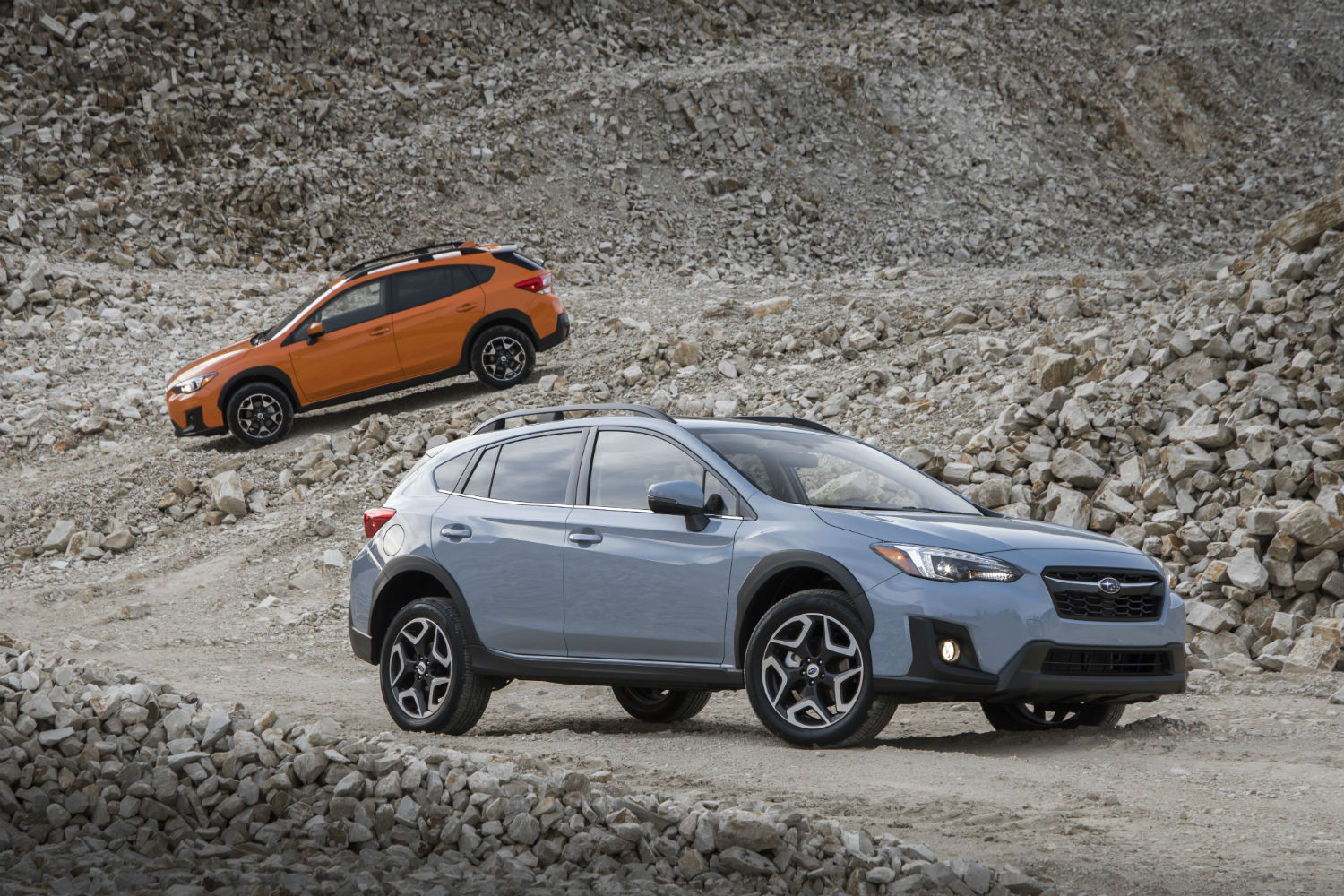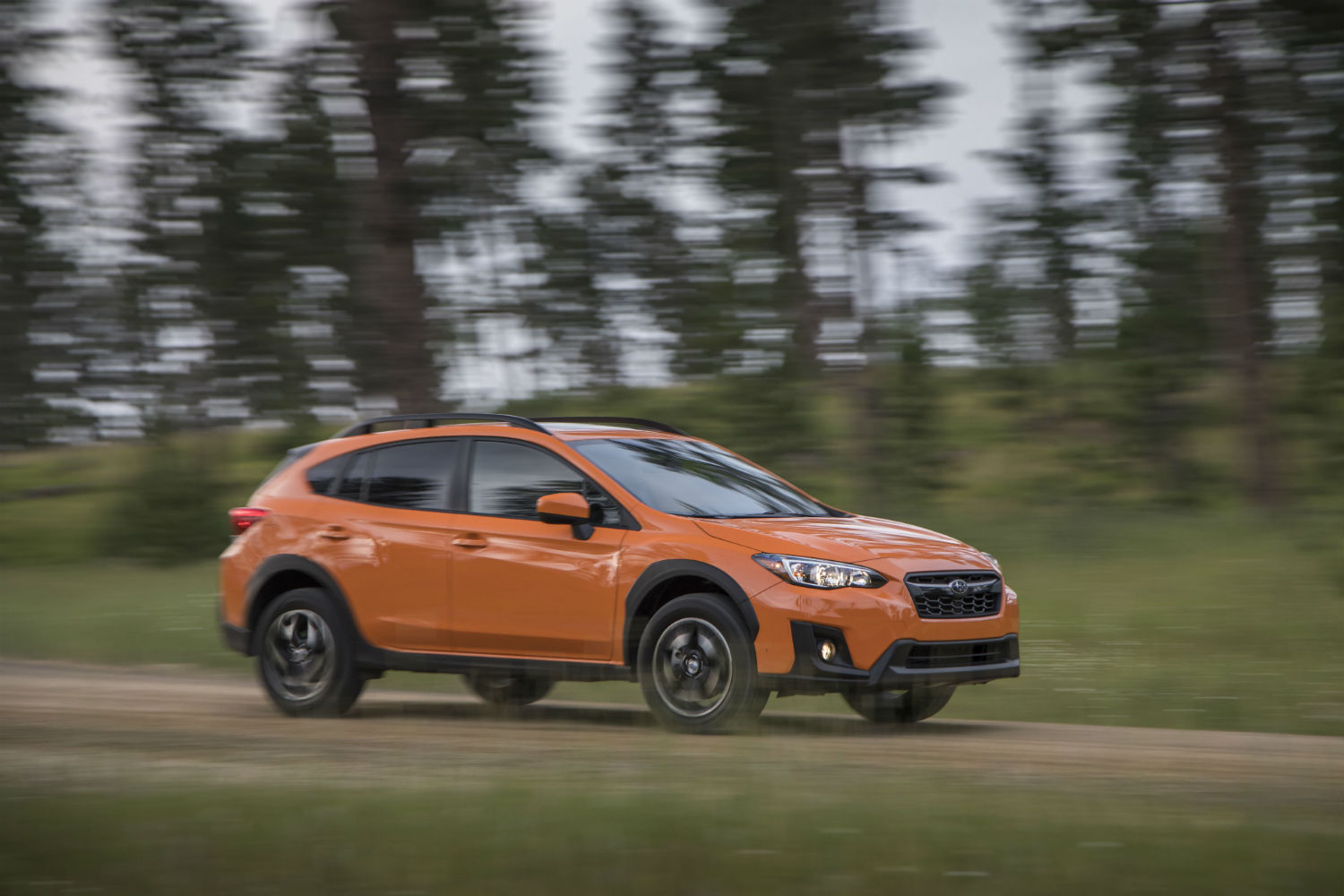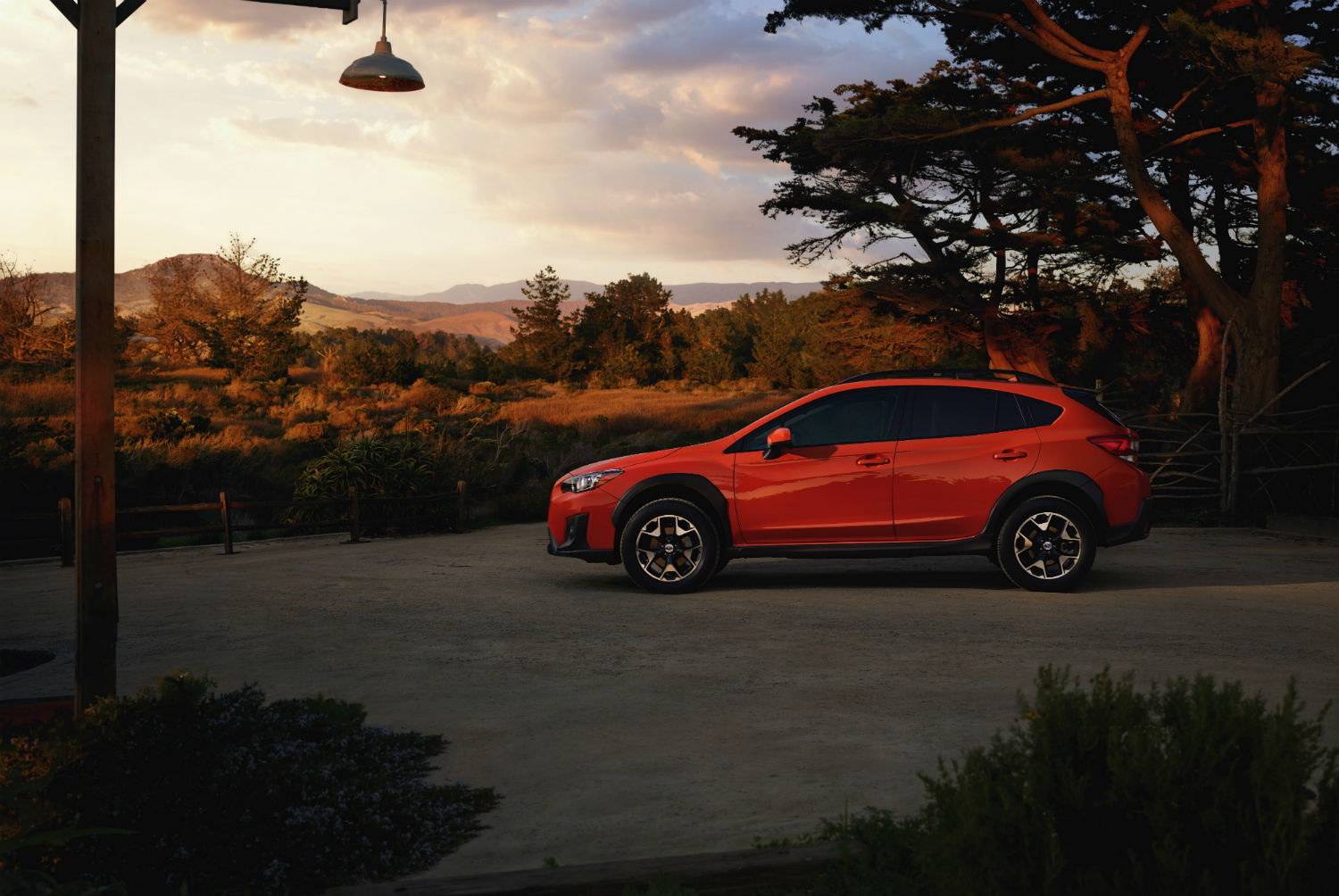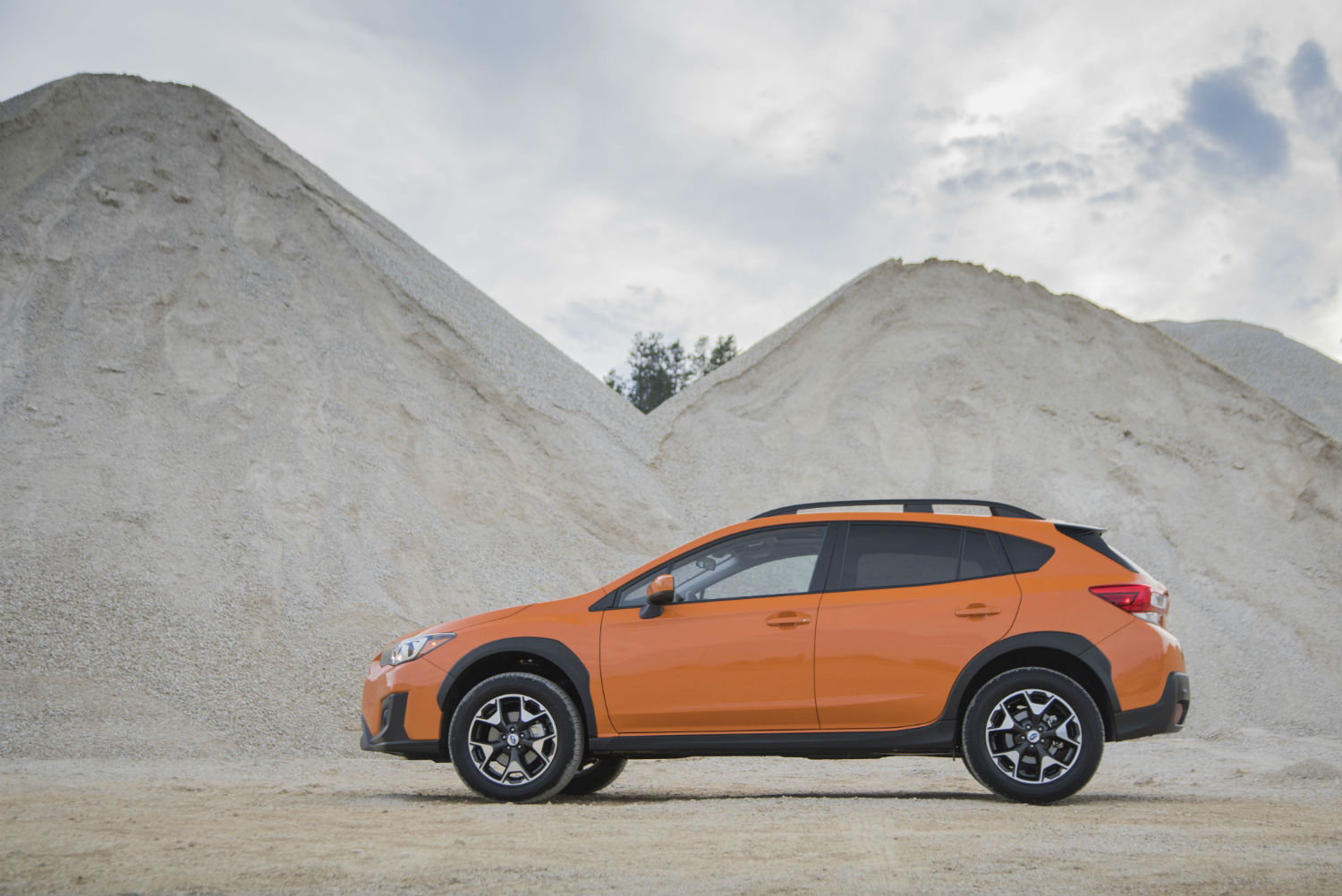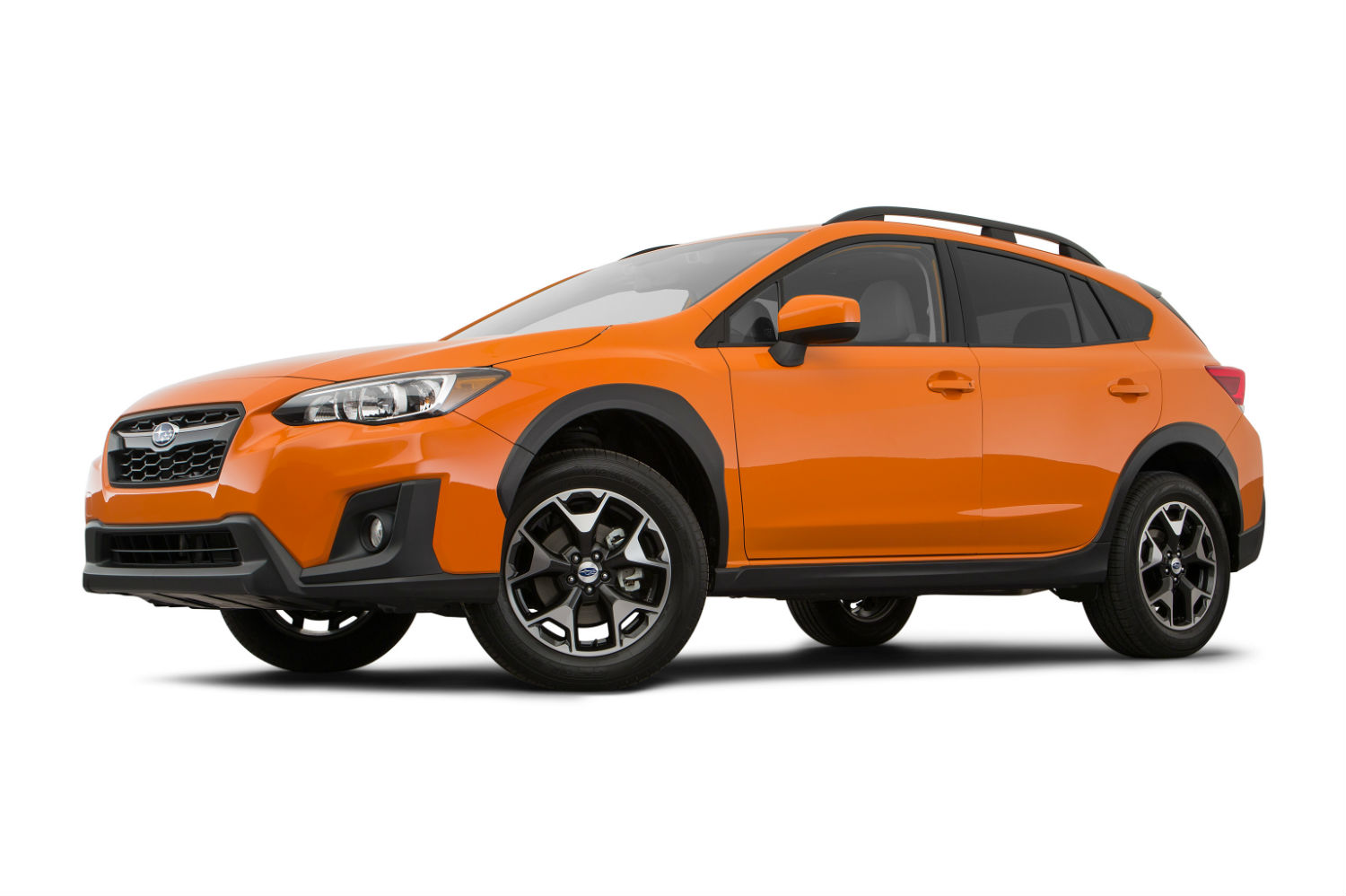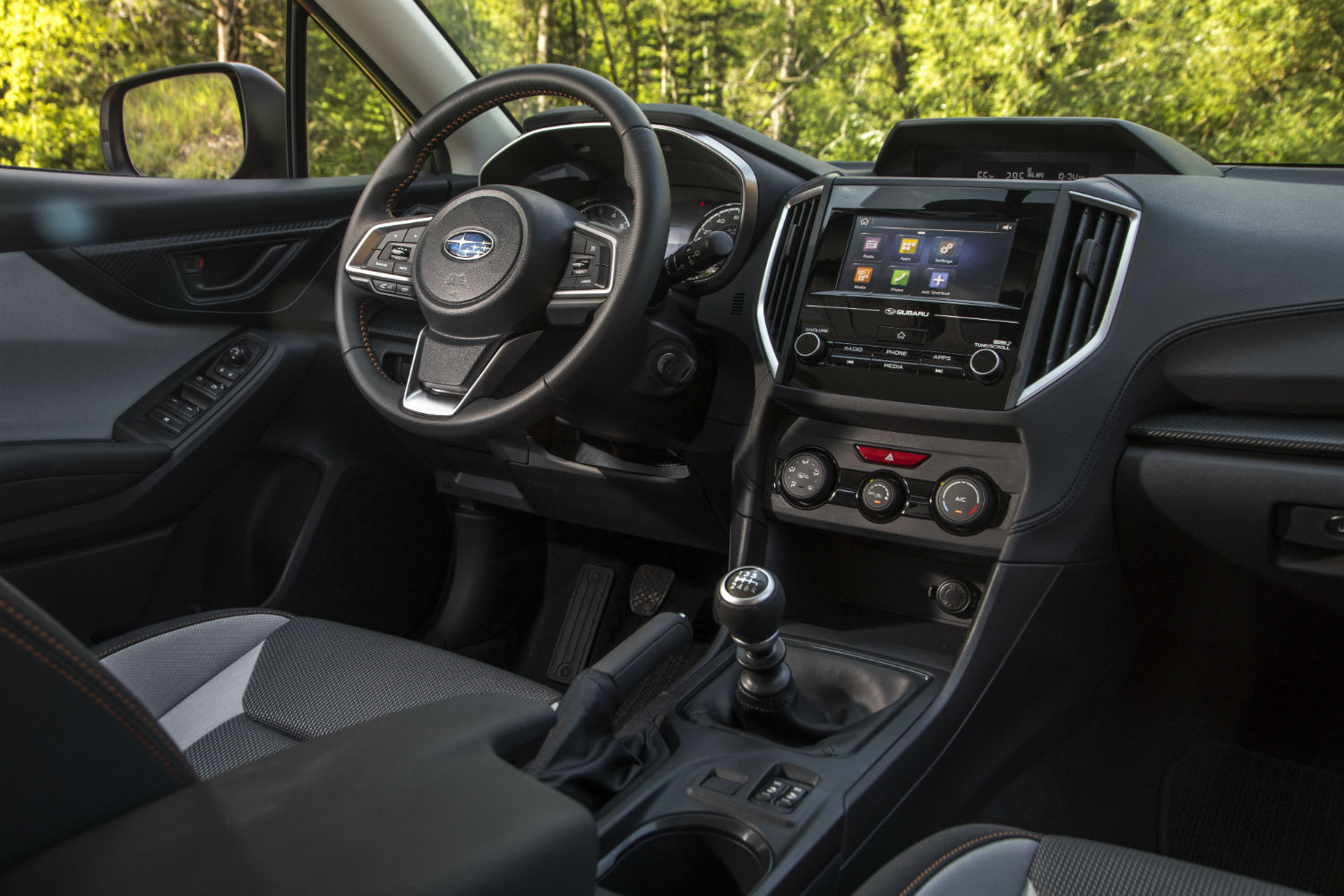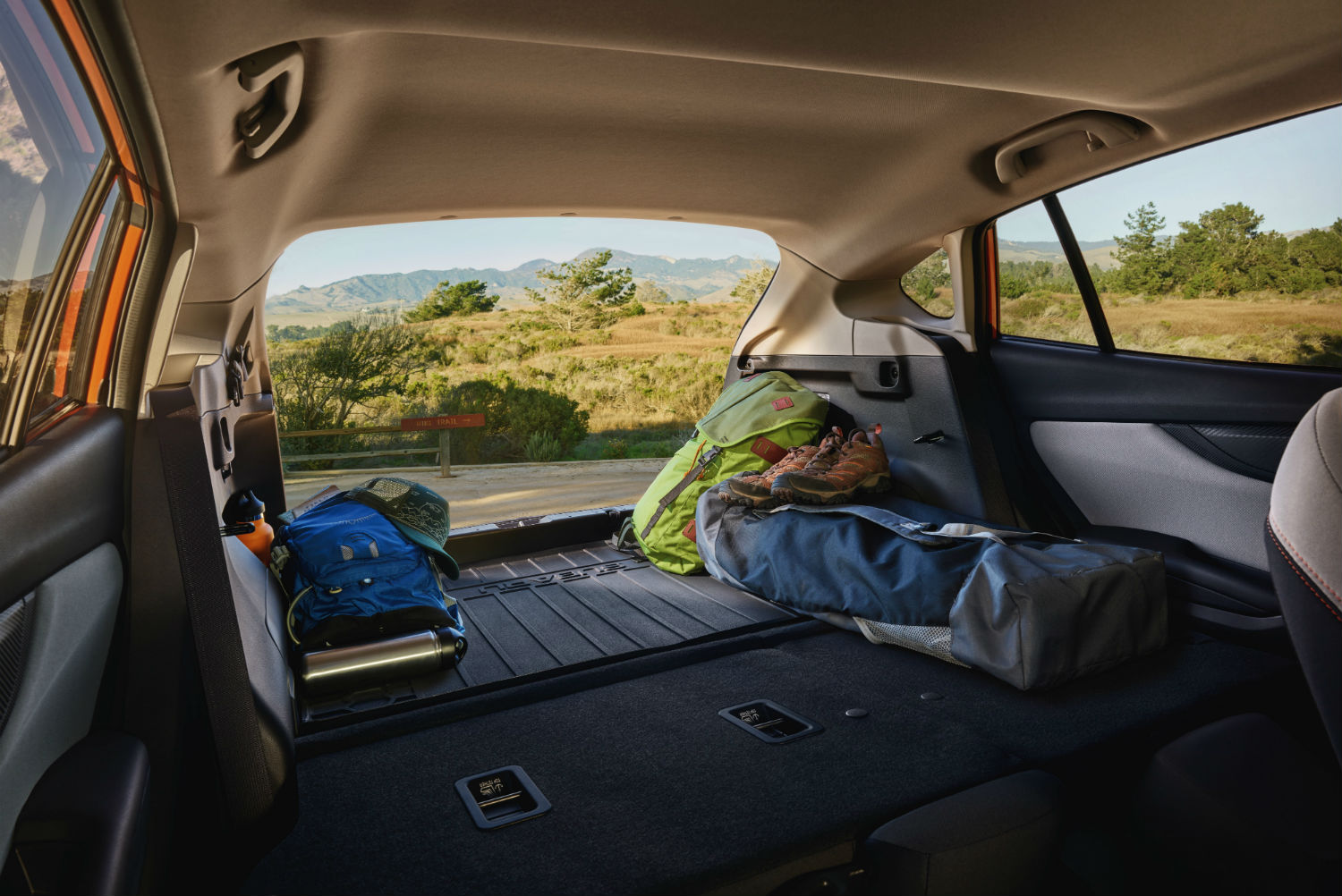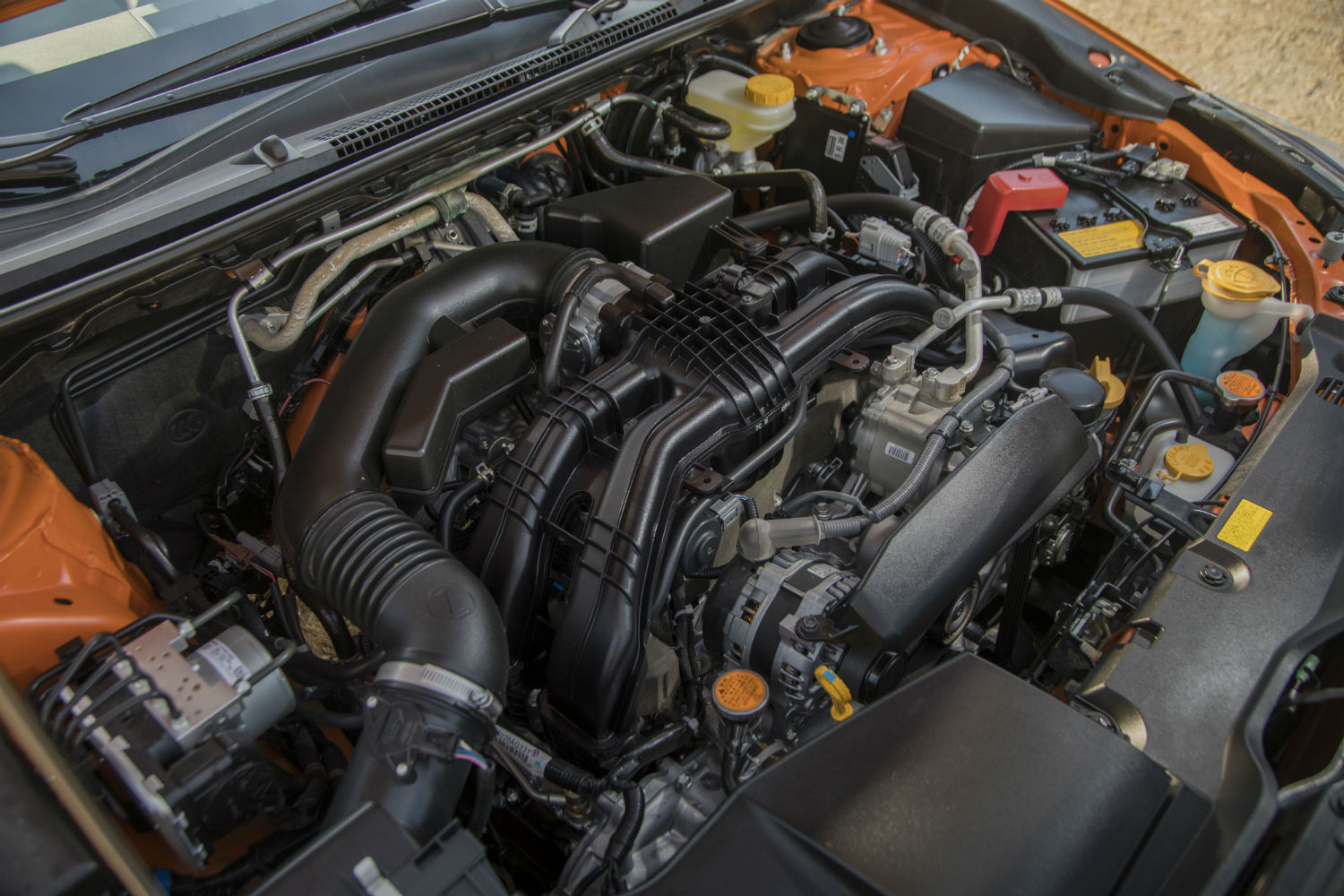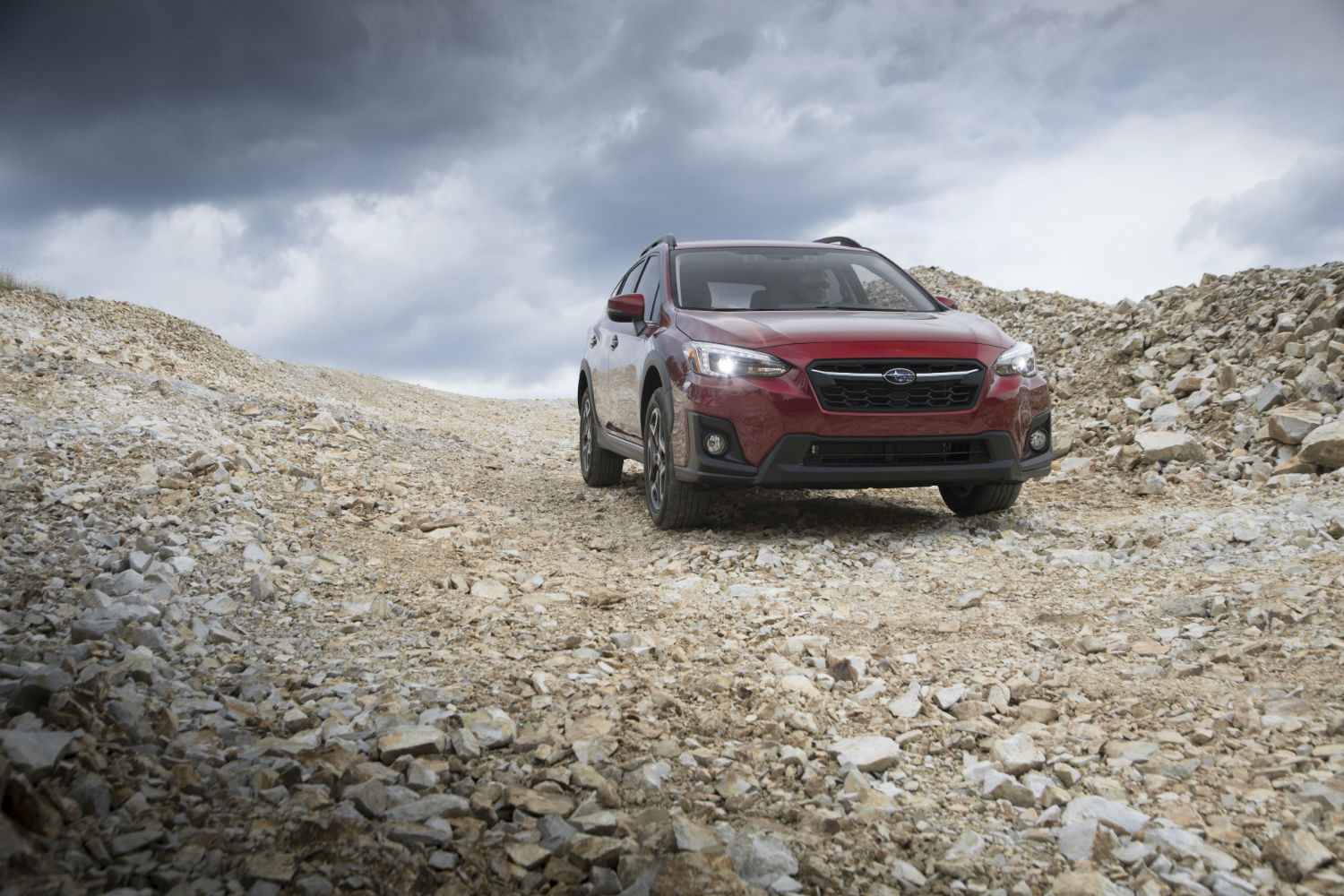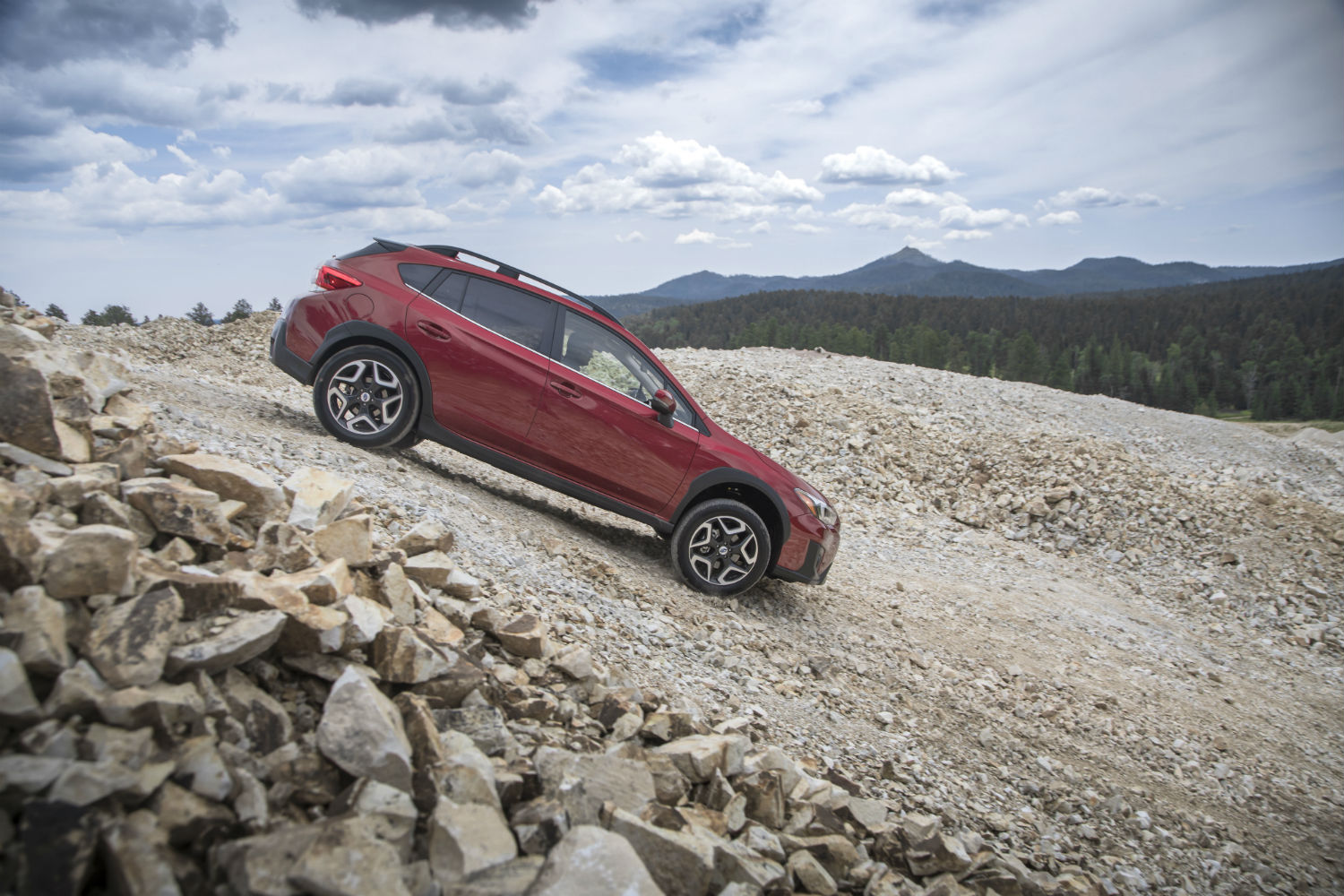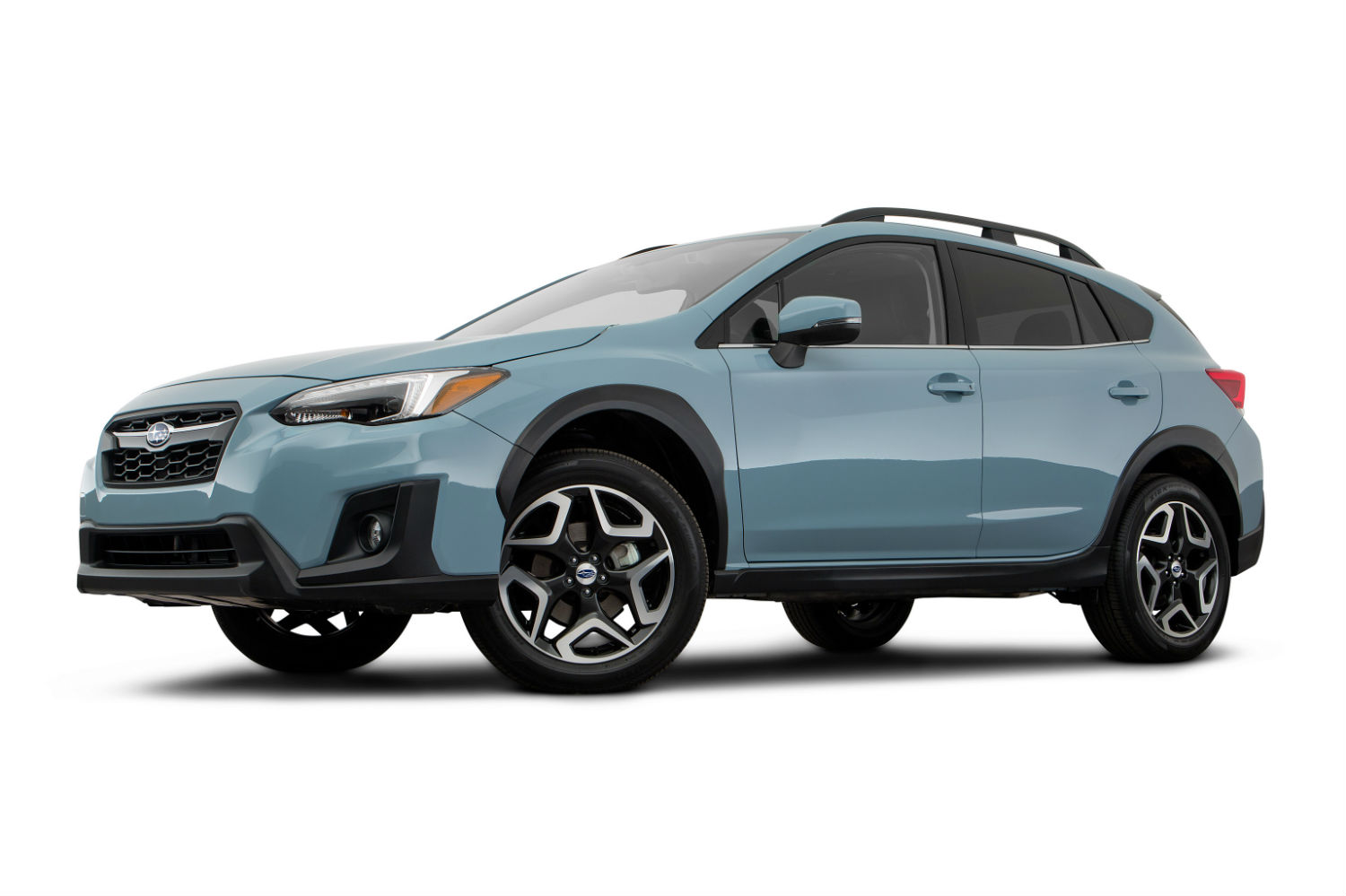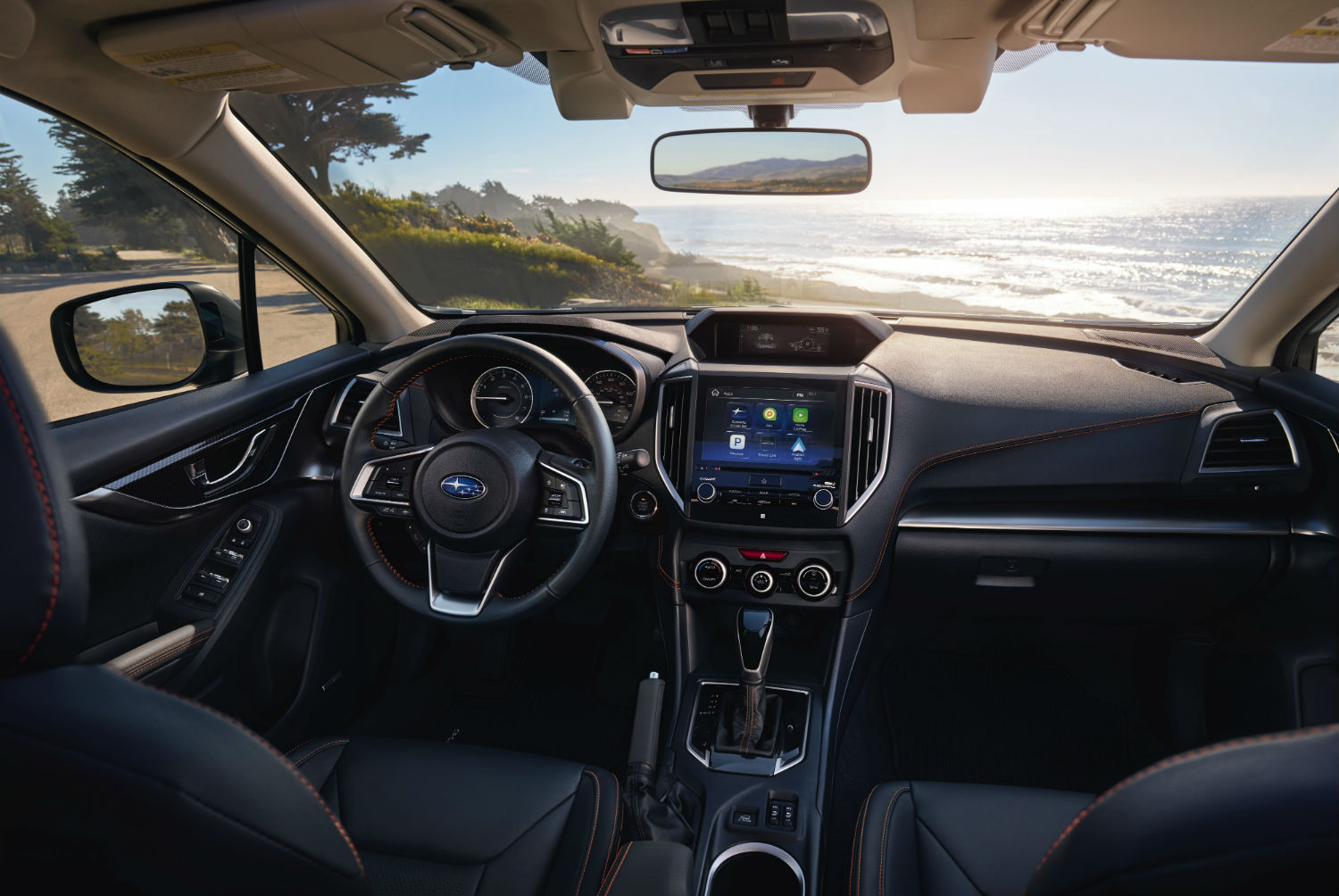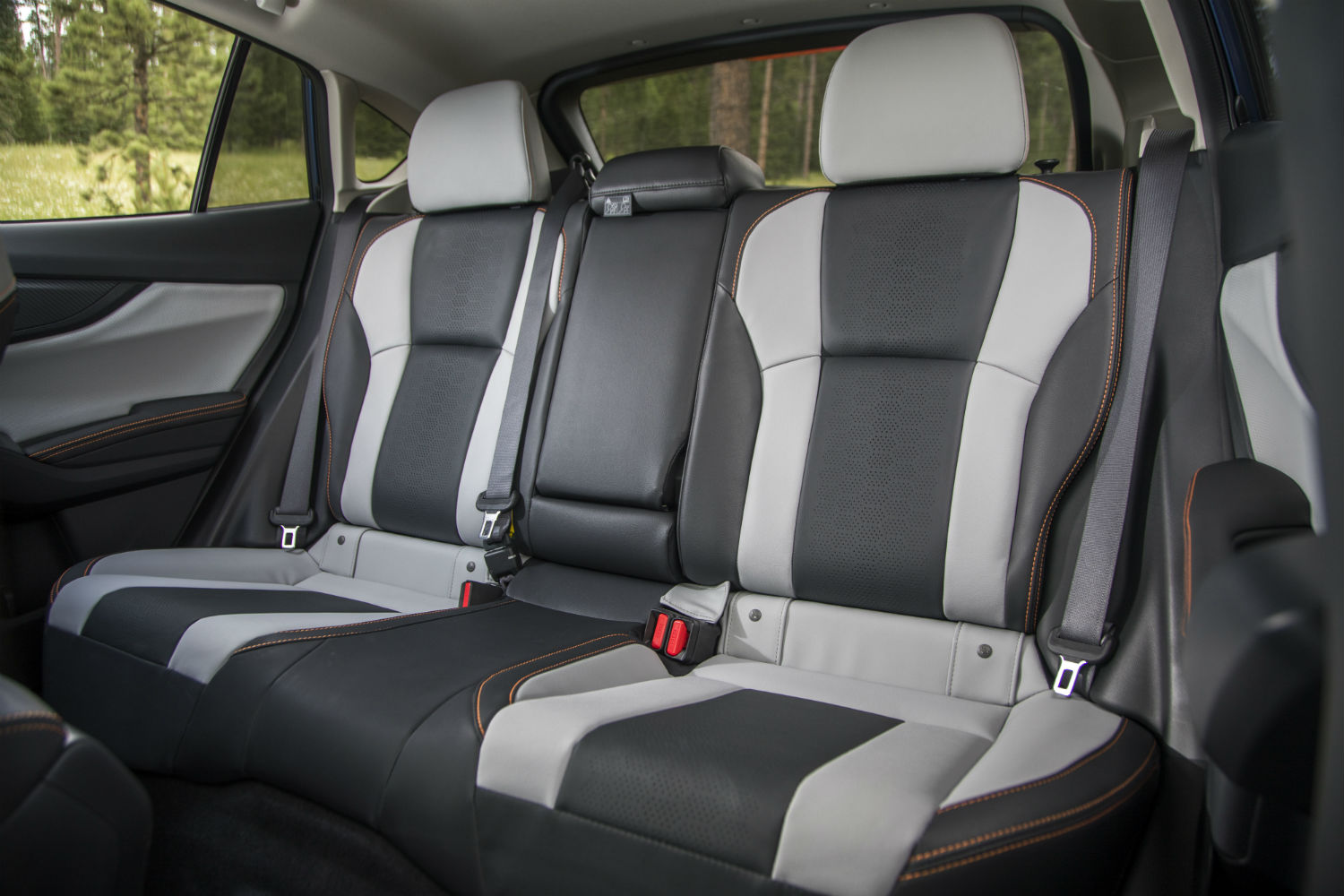Redesigned with new features and better handling than the outgoing model, the 2018 Subaru Crosstrek was first introduced at the 2017 New York Auto Show. The smallest Subaru crossover includes symmetrical all-wheel drive (AWD) on all three trims.
During our first drive review, we gave the 2018 Crosstrek props for its stiffer platform and responsive suspension. We found that the continuously variable transmission (CVT) didn’t do much for acceleration with the Crosstrek’s 152-horsepower 2.0-liter boxer engine, even with its new direct injection and 4 additional hp. The standard six-speed manual transmission made better use of the boxer’s power, though. Crosstreks with the CVT get much better gas mileage but at the cost of acceleration.
Tech features
The new Crosstrek benefits from an improved suspension setup and Stablex shocks. Subaru’s Active Torque Vectoring feature uses the brakes and new 13:1 steering for sharp, smooth turns. The Crosstrek’s 8.7-inches of ground clearance helps when you leave the pavement. All Crosstrek trims have vehicle dynamics electronic stability control and traction control systems.
Even the base Crosstrek 2.0i trim includes Apple CarPlay and Android Auto support for the included Starlink infotainment system. Moving up to the Crosstrek 2.0i Premium and 2.0i Limited trims bumps up the audio equipment along with the variety of bundled apps and services.
Crosstrek safety and driver assistance technology includes features such as lane keeping assist and adaptive cruise control that are available separately or in optional EyeSight Driver Assist bundles. The table below lists the safety and assist tech features that are standard, optional, or not available for the three trim levels. Standard features for each trim are in bold type for added clarity.
| Passive Safety/Driver Assist Features | 2018 Crosstrek 2.0i | 2018 Crosstrek 2.0i Premium | 2018 Crosstrek 2.0i Limited |
| Rear vision camera | Standard | Standard | Standard |
| Tire pressure monitoring | Standard | Standard | Standard |
| Lane change assist | Not available | Optional | Standard |
| Blind spot detection | Not available | Optional | Standard |
| Adaptive cruise control | Not available | Optional | Standard |
| Rear cross traffic alert | Not available | Optional | Standard |
| Lane departure and sway warning | Not available | Optional | Optional |
| Lane keeping assist | Not available | Optional | Optional |
| Automatic pre-collision braking | Not available | Optional | Optional |
| High beam assist | Not available | Not available | Optional |
| Reverse automatic braking | Not available | Not available | Optional |
How to choose a 2018 Subaru Crosstrek
With only three Crosstrek trims, all equipped with the same engine and drive wheel setup, choosing the smallest Subaru crossover needn’t be hard. Decide whether you really need the extra features on the slightly more costly Premium and Limited trims and choose with your wallet.
The capable Crosstrek won’t transport a full hockey team, or even a team rotation if you include their game equipment. You can take the Crosstrek off-road, but don’t plan on serious rock-crawling. As an everyday vehicle for around the town and country, however, the Crosstrek has tons of appeal.
Standard equipment on the 2018 Crosstrek 2.0i, starting price $21,795, includes a six-speed manual transmission, 17-inch alloy wheels, audio and Bluetooth controls on the steering wheel, air conditioning with air filtration, and cloth upholstery. The Starlink infotainment system has a 6.5-inch multi-touch display, AM/FM stereo with four speakers, Apple CarPlay, Android Auto, Aha, Pandora, Bluetooth hands-free phone and audio streaming, and iPod connectivity and support.
In addition to power door locks, power mirrors, and power windows, the Crosstek 2.0i has a rear vision camera, roof rails, brake assist and brake override systems, a 60/40 split fold-down rear seatback, and whiplash-reducing front seats. The only option available with the base trim is Subaru’s Lineartronic CVT transmission.
Starting at $22,595, or just $800 more than the base model, the 2018 Crosstrek 2.0i Premium has a deeper feature set. The 2.0i Premium trim picks up an all-weather package with heated front seats, heated side mirrors, and a windshield wiper de-icer. The infotainment system gains two more speakers for a total of six and comes with a one-year complimentary subscription to the Starlink Connected Services suite of safety monitoring and security programs.
Additional features with the 2.0i Premium trim include fog lights, auto-on/off headlights, illuminated vanity mirrors, and leather-wrapped steering wheel and shift knob. Premium models also can access a wide options list including the EyeSight passive safety and driver assist features and a power moonroof.
The top trim for Subaru’s smallest crossover is the Crosstrek 2.0i Limited, starting at $26,295, or $3,700 more than the Premium trim. Premium models include 18-inch wheels, a six-way power driver’s seat, LED headlights with auto high and low beam control, CVT, automatic climate control, and blind spot detection with rear cross traffic alerts.
Other upgrades included on the Limited trim are an 8-inch display for the Starlink infotainment system, a single-disc CD player, voice-activated and gesture control, Near Field Communications (NFC) support, and trial subscriptions to SiriusXM Radio and TravelLink. Limited Crosstrek vehicles also have leather upholstery, a power moonroof, keyless access with push-button start, a 4.2-inch instrument information display, and exterior mirrors with integrated turn signals. Remaining options for the Limited trim include additional driver assist features, a Harman Kardon 440-watt audio system with eight speakers, and integrated navigation.
| Trim | 2018 Crosstrek 2.0i | 2018 Crosstrek 2.0i Premium | 2018 Crosstrek 2.0i Limited |
| Base price | $21,795 | $22,595 | $26,295 |
| Drive wheels | All wheel drive | All wheel drive | All wheel drive |
| Base engine | 2.0L 4-cylinder Boxer | 2.0L 4-cylinder Boxer | 2.0L 4-cylinder Boxer |
| Base horsepower | 152 hp @ 6,000 RPM | 152 hp @ 6,000 RPM | 152 hp @ 6,000 RPM |
| Base torque | 145 lb-ft @ 4,000 RPM | 145 lb-ft @ 4,000 RPM | 145 lb-ft @ 4,000 RPM |
| Transmission | 6-speed manual | 6-speed manual | CVT |
| Fuel | Regular gas | Regular gas | Regular gas |
| Fuel capacity | 16.6 gallons | 16.6 gallons | 16.6 gallons |
| Fuel economy | 23 mpg city/29 mpg highway/25 mpg combined | 23 mpg city/29 mpg highway/25 mpg combined | 27 mpg city/33 mpg highway/29 mpg combined |
| Base wheels | 17-inch | 17-inch | 18-inch |
| Body style | 4-door SUV | 4-door SUV | 4-door SUV |
| Passengers | 5 | 5 | 5 |
| Storage behind 2nd-row seats | 20.8 cu ft | 20.8 cu ft | 20.8 cu ft |
| Storage behind 1st-row seats | 55.3 cu ft | 55.3 cu ft | 55.3 cu ft |
| Max Towing capacity | Not applicable | Not applicable | Not applicable |
| Seat upholstery | Cloth | Cloth | Leather |
